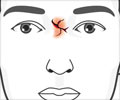Research has shown that scent picked up by nose receptors travels to the brain, but how the brain processes these smells has never been explained until now.

The technique mapped for the first time the path that the scent signals take from the olfactory bulb, the part of the brain that first receives signals from odour receptors in the nose, to higher centres of the brain where the processing is done.
The tools could be used to understand how mouse brains process information from their other senses, or how the brain controls movement.
To trace the neural pathways, the researchers injected mouse brains with two viruses, one after the other. Then they first injected a low-grade virus into the higher centers of a mouse brain, where it infected nearby neurons.
Genes introduced by the first virus allowed the next virus to infect its way from the higher brain to the olfactory bulb, going in the opposite direction of scent signals. By following the backward progress of the second virus, the scientists could identify the neurons in the olfactory bulb where the virus ended up, thanks to the red fluorescence.
Slicing each mouse brain into about 60 thin sections, the team found that most of the nerve pathways heading to the higher processing centres that direct the mice's innate like or dislike of certain odours, and trigger a response to them, originated from one region - the top part of the olfactory bulb.
Advertisement
In addition, he said, "There might be similar organizational principles in flies and mice, despite the evolutionary distance between them."
Advertisement
Luo said he was also working to improve the technique to track neurons across longer distances, allowing him to look in more detail at other pathways in the mouse nervous system.
The study will be published in Nature.
Source-ANI















